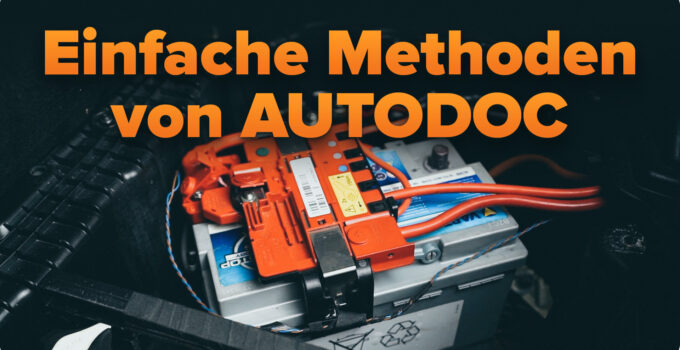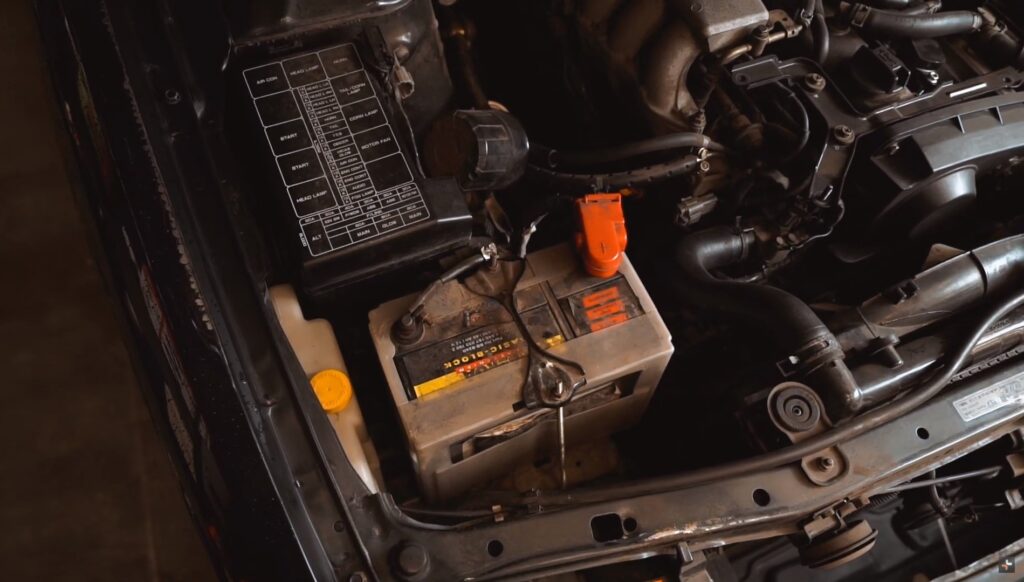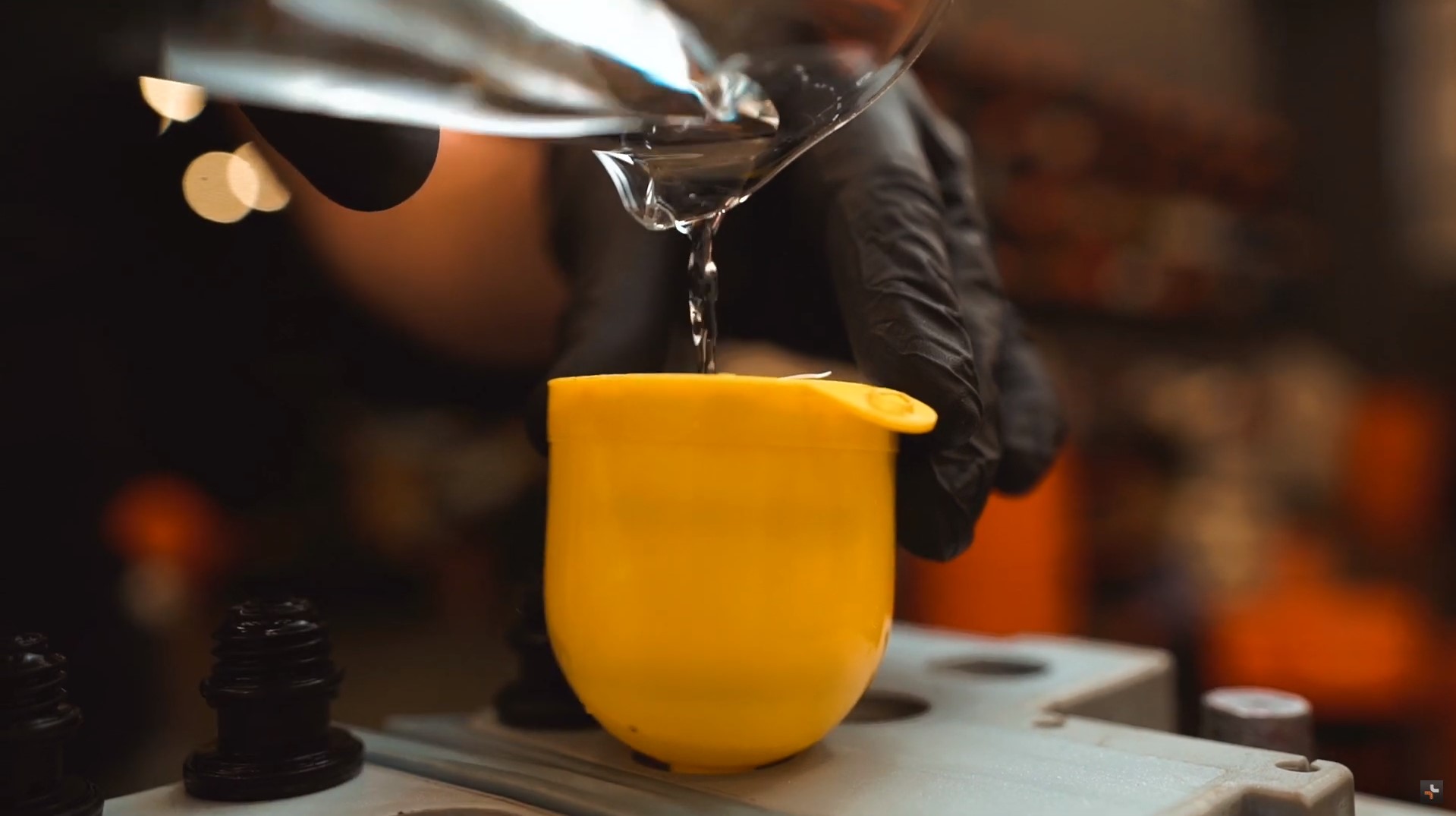
Simple methods of CarTipsandmore
- Take the Battery inspection
- If there is corrosion on the battery terminals, remove it with a wire brush and apply copper grease.
- If you see any damage on the case, the battery should be replaced.
- Use the gauge to check the electrolyte level
Remove any dust or dirt from the gauge and look at its color:
- Green means the electrolyte and charge levels are normal.
- White means the charge is low and the battery needs to be recharged.
- Redmeans that the acidity of the electrolyte has increased and the water level has decreased.
- Make sure the battery terminals are disconnected.
- Add distilled water if needed.
- Please wear rubber gloves when working with the electrolyte: skin contact can lead to chemical burns.

- Check the electrolyte level using the special markings on the battery case
Make sure the electrolyte level is between the „min“ and „max“ Marks is.
- Make sure the battery terminals are disconnected.
- Add distilled water if needed.
- When working, please wear the Electrolyte Rubber Gloves: Skin contact may cause burns.
- Check the electrolyte level with a glass tube if your battery doesn't have level markings
- This only applies to batteries that are also serviceable.
- Check the electrolyte level of each cell.
- Park the car on a level surface. Clean the battery cells of dust and dirt.
- Remove the cell cap and insert the tube.
- When the tube reaches the lead plates, fill it up and remove it.
- Replace the cell cap.
- The level of electrolyte in the tube indicates its level in the battery.
li>
- Make sure the battery terminals are disconnected.
- Add distilled water if needed.
- Please contribute to the work the electrolyte Rubber gloves: Skin contact can cause chemical burns.

- Check the electrolyte density
- Park the car on a level surface. Clean the battery cells of dust and dirt.
- Remove the cell cap and insert the hydrometer tube.
- Draw a complete sample of the electrolyte into the hydrometer. The float should float freely in the liquid.
- The mark where the electrolyte meets the scale on the float shows the electrolyte density.
- Carefully release the electrolyte back into the battery.
- Replace the cell lid.
- Make sure the battery terminals are disconnected.
- This only applies to batteries that are also serviceable.“
- Check the electrolyte density of each cell.
- Measure the voltage of the battery with a voltmeter or multimeter
Set the multimeter to measure DC voltage and set the measuring range to 20 volts .
Connect the black test lead of the multimeter to the negative terminal of the battery and the red test lead to the positive terminal. Read the multimeter reading.- When the battery is fully charged, the voltage should exceed 12.6 volts. A voltage of less than 12.6 volts means that the battery has less than 50% charge.
- If the battery voltage is less than 11.6 volts, it means that the battery is completely discharged .
- Make sure the battery terminals are disconnected.
- If necessary, clean the binding posts with a wire brush before checking.

- Check charge the battery with a battery charge tester
- Make sure the battery terminals are disconnected.
- If necessary, clean the binding posts with a wire brush before checking .
- The battery should be 6 to 8 hours before verification.
- i Only run the check if the electrolyte level is normal.
Connect the test leads to the negative and positive battery terminals:
- Measure the voltage of the battery without load resistance.
- If the readings are between 12.6 and 12, 9, the battery is fully charged.
- If the readings are lower than 11.5, the battery is discharged.
- < i class="as-icon as-icon--circle as-icon--info" style="background-color: #fffff"> Repeat the measurement a few times.
- The verification should not take longer than 6 to 10 seconds.
- Wait 3 to 5 minutes between individual measurements.
- Measure the voltage of the battery with a load resistor.
- If the readings are higher than 10.2, the battery is fully charged.
- If the readings are lower than 7.8, the battery is fully discharged.
< /ul>
- Measure the voltage of the battery with a load resistor.
- Measure the voltage of the battery with a voltmeter or multimeter
- Check the electrolyte density
